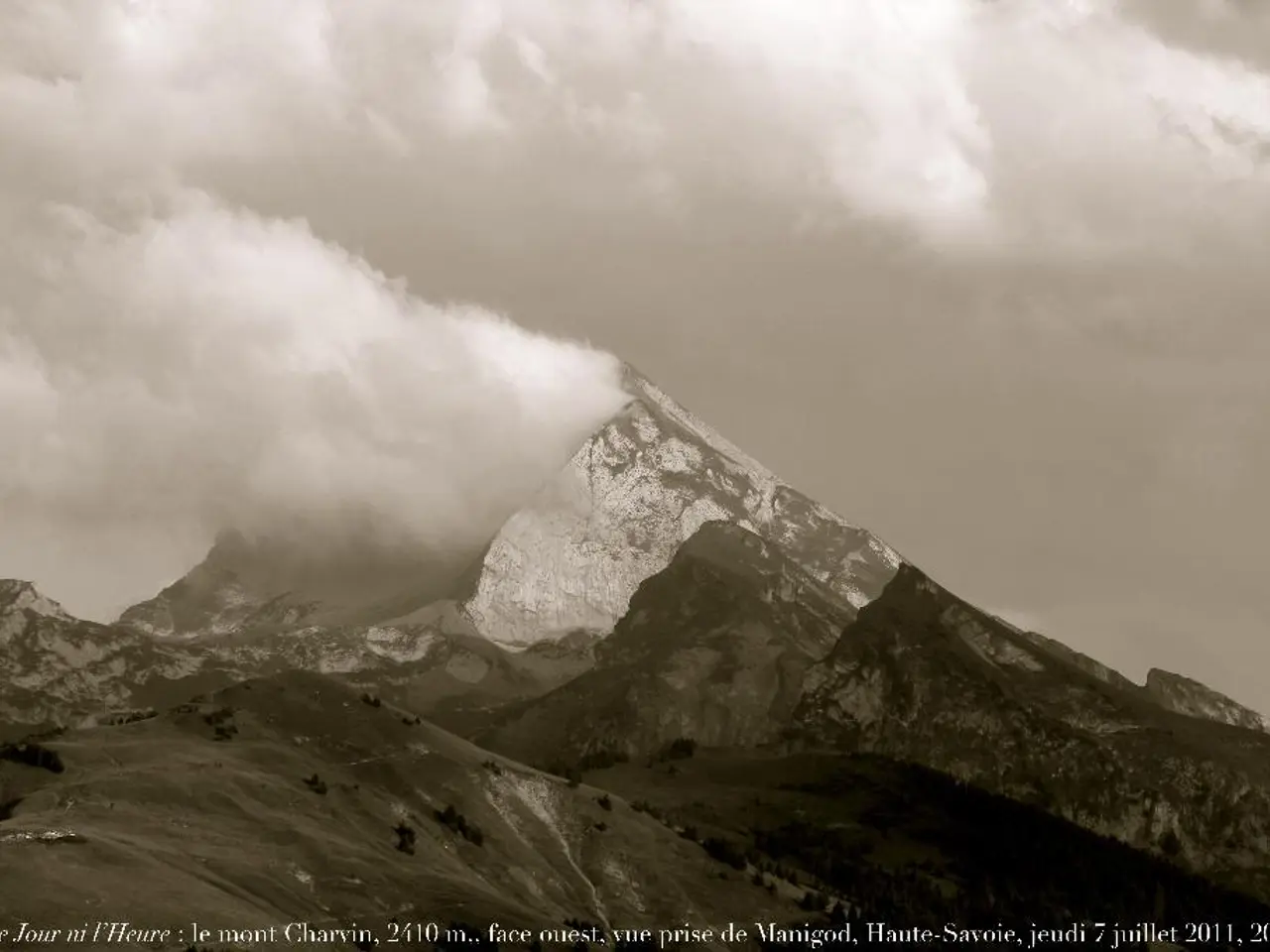Catastrophic Flash Flood Leads to Disappearance of Over 100 Residents in Indian Himalayan Village
Uttarakhand Faces Deadly Flash Flood: A Call for Improved Disaster Preparedness and Resilience
Uttarakhand, a mountainous region in northern India, has been hit by a devastating flash flood following a cloudburst on August 5, 2025. The disaster has engulfed numerous buildings, disrupted connectivity, and left many missing and feared dead.
Prime Minister Narendra Modi extended his condolences and pledged the full mobilization of rescue resources. The Union Home Minister Amit Shah and Uttarakhand Chief Minister Pushkar Singh Dhami have coordinated emergency responses to manage the crisis.
The India Meteorological Department reported over 210 mm of rainfall in 24 hours, triggering a flash flood that swept through the tourist village of Dharali. About 50 hotels and numerous residential buildings were submerged, and the flood also damaged parts of a nearby army camp and washed out sections of the national highway.
The cloudburst in Uttarakhand's Dharali was an intense downpour exceeding 100 mm per hour, commonly occurring in mountainous zones. Experts warn that such cloudburst-induced events are becoming more frequent and severe due to climate change.
The disaster highlights the growing threat of extreme weather events in India's Himalayan region, heightened by climate change, glacier melt, and inadequate land-use planning. Officials stress the urgency of improved disaster preparedness, sustainable development, and ecological protection to mitigate future tragedies.
Current disaster preparedness measures in Uttarakhand include immediate rescue and relief operations coordinated by state and central agencies such as the Army, National Disaster Response Force (NDRF), State Disaster Response Force (SDRF), Police, Fire Department, and ITBP. The government has also released funds from the State Disaster Response Fund for relief and rescue efforts, set up relief camps, and arranged food, shelter, and medical care.
Real-time coordination via the State Emergency Operation Center for disaster monitoring and response, evacuation orders, and temporary suspension of trekking permits to minimize risk are key preparedness strategies currently implemented. Helicopters, ambulances, helpline services, and food airdrops for isolated communities have also been deployed.
However, the steep terrain and narrow valleys of Uttarakhand lead to high-energy, fast-moving floods. Early warning systems in remote regions remain inadequate, with underdeveloped real-time river flood monitoring and alerting. Unplanned infrastructure development near riverbanks increases vulnerability, and environmental stresses from tourism and construction projects strain limited resources and worsen flood impact.
Future plans to improve disaster resilience in Uttarakhand include strengthening early warning systems, stricter land-use controls, resilient infrastructure, and community-based resilience building. The Uttarakhand Disaster Recovery Project, funded by the World Bank, is rebuilding infrastructure to be more disaster-resilient. Shifting development approaches towards sustainability, reducing dependence on environmentally damaging tourism, and promoting livelihoods less vulnerable to climate impacts are also being prioritized.
In summary, Uttarakhand’s disaster preparedness currently emphasizes rapid response and relief coordination, while future plans focus on improved early warning systems, stricter land-use controls, resilient infrastructure, and community-based resilience building to address the escalating challenge of flash floods and related disasters in the region. Schools in the region have been closed, and the India Meteorological Department has issued alerts predicting continued heavy rains through August 10. River mud reached 15 meters in depth in some areas of Dharali, submerging rooftops and obliterating infrastructure.
Read also:
- Court petitions to reverse established decision on same-sex marriage legalization
- Trump's enforcement actions in Washington D.C.: Insights from the political arena
- Chinese Ambassador issues stern message to India regarding Trump's tariffs in midst of escalating trade feuds
- Aircraft collides with another one on the runway during landing at Montana airport, igniting flames








